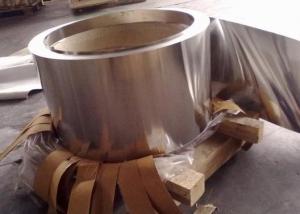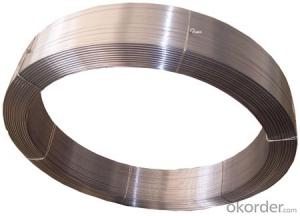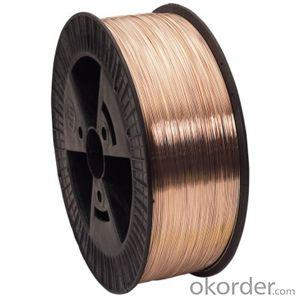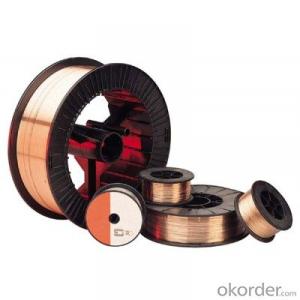Stainless Steel Trim Strips
Stainless Steel Trim Strips Related Searches
Best Paint For Stainless Steel Blanket Insulation For Steel Buildings Primer For Galvanized Steel Foam Filter For Stainless Steel H S Code For Stainless Steel Surface Grinding Wheels For Stainless Steel Surface Grinding Wheels For Hardened Steel Hole Saw For Stainless Steel Paint For Stainless Steel Stainless Steel For BbqHot Searches
Steel Mesh Panels For Sale Price For Stainless Steel Scrap Scrap Price For Stainless Steel Price For Stainless Steel Stainless Steel Tank For Sale Stainless Steel Sheets For Sale Cheap High Tea Sets For Sale Stainless Steel Tanks For Sale Stainless Steel For Sale High Density Fiberboard For Sale Solar Hot Water Collectors For Sale Scaffolding For Sale In Uae Scaffolding For Sale In Ireland Scaffolding For Sale In Houston Type Of Inverter For Solar Price Of Shipping Containers For Sale Types Of Inverter For Solar Stock Price For Aluminum Used Solar Inverter For Sale Steel Mesh Panels For SaleStainless Steel Trim Strips Supplier & Manufacturer from China
Okorder.com is a professional Stainless Steel Trim Strips supplier & manufacturer, offers integrated one-stop services including real-time quoting and online cargo tracking. We are funded by CNBM Group, a Fortune 500 enterprise and the largest Stainless Steel Trim Strips firm in China.Hot Products
FAQ
- There are several different types of stainless steel wire constructions, each with its own unique characteristics and applications. Some of the most common types include: 1. Plain Weave: This is the simplest and most commonly used type of stainless steel wire construction. It consists of wires woven together in an alternating pattern, creating a strong and durable mesh. Plain weave stainless steel wire constructions are typically used for general industrial applications, filtration, and screening purposes. 2. Twilled Weave: Twilled weave stainless steel wire constructions are characterized by a diagonal pattern created by the overlapping of wires. This type of construction provides increased strength and stability compared to plain weave, making it suitable for applications where extra durability is required, such as heavy-duty filtration or sieving. 3. Dutch Weave: Dutch weave stainless steel wire constructions are known for their high strength and fine filtration capabilities. In this type, the warp wires are thicker and closely spaced, while the weft wires are thinner and widely spaced. This unique construction allows for precise and efficient filtration, making it ideal for applications involving liquids, gases, or fine particles. 4. Reverse Dutch Weave: Reverse Dutch weave stainless steel wire constructions are similar to Dutch weave but with reversed wire positions. The warp wires are thinner and closely spaced, while the weft wires are thicker and widely spaced. This construction offers exceptional strength and rigidity, making it suitable for applications that require high filtration efficiency and resistance to mechanical stress, such as pressure filters and hydraulic systems. 5. Welded Mesh: Welded mesh stainless steel wire constructions are created by welding individual wires together at their intersections. This construction provides a solid and rigid mesh that is resistant to deformation and offers excellent structural integrity. Welded mesh is commonly used in applications such as fencing, enclosure panels, and concrete reinforcement. Overall, the choice of stainless steel wire construction depends on the specific requirements of the application, including strength, filtration efficiency, corrosion resistance, and durability. Each type has its own advantages and limitations, and understanding these differences is crucial in selecting the most suitable stainless steel wire construction for a particular purpose.
- Absolutely! Safety wire can definitely utilize stainless steel wire. The strength, durability, and corrosion resistance of stainless steel wire make it an exceptional option for safety wire applications. Typically, safety wire is employed to secure fasteners and prevent them from becoming loose or vibrating loose. Thanks to the impressive tensile strength of stainless steel wire, it is capable of withstanding the necessary tension for safety wire purposes, thereby offering a dependable and secure fastening solution. What's more, stainless steel wire's ability to resist corrosion means that it will remain intact even in challenging environments, thus further enhancing its suitability for safety wire usage.
- There exist various stainless steel wire rope constructions, each possessing its distinct characteristics and uses. Some commonly encountered types are as follows: 1. 1x19 Construction: Comprising 19 wires twisted together into a single strand, with one central wire enveloped by six strands, each consisting of two wires. It offers exceptional strength and limited flexibility, making it perfect for applications necessitating high tensile strength, for instance, standing rigging on sailboats. 2. 7x7 Construction: This construction incorporates seven strands, with each strand composed of seven wires twisted together. It provides satisfactory flexibility and moderate strength, rendering it suitable for applications such as cable railing, garage door cables, and winch lines. 3. 7x19 Construction: Resembling the 7x7 construction, this type of wire rope includes seven strands, each consisting of 19 individual wires. It offers improved flexibility and heightened strength in comparison to the 7x7 construction, thus making it suitable for a wide range of applications, including lifting slings, guy wires, and zip lines. 4. 6x19 Construction: This construction consists of six strands, with each strand comprising 19 wires twisted together. It offers good flexibility and high strength, making it appropriate for applications like crane hoist ropes, winch lines, and overhead lifting. 5. 6x36 Construction: This construction is characterized by six strands, with each strand consisting of 36 individual wires twisted together. It provides excellent flexibility and high breaking strength, rendering it ideal for applications that necessitate both flexibility and strength, for example, elevator ropes, wire rope slings, and tow lines. 6. 1x7 Construction: This construction is composed of a single strand twisted together from seven wires. It offers high tensile strength and limited flexibility, making it suitable for applications that require maximum strength, such as control cables and wire rope fencing. These examples showcase only a fraction of the stainless steel wire rope constructions that are available. The choice of construction relies on the specific requirements of the application, encompassing strength, flexibility, and durability.
- Yes, stainless steel wire can be used for architectural purposes. It is a versatile and durable material that is commonly used in architectural applications such as balustrades, fences, mesh panels, and decorative elements due to its strength, corrosion resistance, and aesthetic appeal.
- Yes, stainless steel wire is suitable for wire rope clamps. Stainless steel is known for its high strength and corrosion resistance, making it an ideal material for wire rope clamps. These clamps are used to secure wire ropes and cables, and the stainless steel construction ensures durability and longevity, even in harsh environments. Additionally, stainless steel wire rope clamps provide a secure grip on the wire rope, preventing slippage and ensuring safety.
- What's the difference between stainless steel wire drawing and stainless steel products?
- Stainless steel wire drawing is a kind of metal processing technology. It is the most popular surface treatment technology in the stainless steel and aluminum products industry. It is the drawing effect of the stainless steel and aluminum products.
- Wire rope slings can be made using stainless steel wire. Stainless steel wire is an excellent choice for wire rope slings due to its strength, resistance to corrosion, and durability. Various industries, such as construction, shipping, mining, and oil and gas, commonly use stainless steel wire rope slings. These slings are known for their ability to withstand harsh environments, resist corrosion, and provide reliable lifting and hoisting capabilities. Moreover, stainless steel wire rope slings have a long lifespan, making them a cost-effective and dependable option for heavy-duty lifting operations. However, it is crucial to properly maintain and regularly inspect the stainless steel wire rope sling to ensure safe usage and compliance with relevant safety standards.
- Indeed, wire jewelry making can benefit from the use of stainless steel wire. The preference for stainless steel wire among jewelry makers is primarily attributed to its exceptional qualities, including its ability to withstand wear and tear, its remarkable strength, and its resistance to developing tarnish. This versatile material allows for effortless manipulation, enabling the creation of intricate designs and diverse shapes. Furthermore, stainless steel wire is a hypoallergenic option, rendering it ideal for individuals with delicate skin. Whether one intends to fashion earrings, necklaces, bracelets, or even wire-wrapped pendants, stainless steel wire remains a trustworthy and enduring choice for wire jewelry making.














































